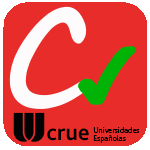| dc.contributor.author | Ortiz-de-Zarate, Gorka | |
| dc.contributor.author | Sela, Andrés | |
| dc.contributor.author | Saez de Buruaga, Mikel | |
| dc.contributor.author | CUESTA ZABALAJAUREGUI, MIKEL | |
| dc.contributor.author | Madariaga, Aitor | |
| dc.contributor.author | Garay, Ainara | |
| dc.contributor.author | ARRAZOLA, PEDRO JOSE | |
| dc.date.accessioned | 2025-04-08T15:36:11Z | |
| dc.date.available | 2025-04-08T15:36:11Z | |
| dc.date.issued | 2019 | |
| dc.identifier.issn | 0268-3768 | en |
| dc.identifier.other | https://katalogoa.mondragon.edu/janium-bin/janium_login_opac.pl?find&ficha_no=149828 | en |
| dc.identifier.uri | https://hdl.handle.net/20.500.11984/6943 | |
| dc.description.abstract | Broaching is a widely used finishing operation for the manufacturing of transmission gears which are commonly made of steel AISI 1045. Therefore, there is a high interest for industry to understand the metal cutting process and modelling could shed light on it. In the present work, an innovative methodology to establish a hybrid model based on the combination of empirical, numerical and analytical approaches, is presented. The hybrid model improves the cutting force, feed force and chip thickness predictions when compared to the results obtained with the empirical, numerical or analytical ones separately. The empirical model was developed by carrying out experimental tests under orthogonal condition close to broaching. The analytical method uses the Oxley law extended to the proposed flow stress model. DEFORM-2D software was used for the finite element model development with a specific subroutine for the constitutive model. The influence of each approach in the hybrid model was calculated based on a statistical analysis between experimental and model results. Moreover, to achieve better predictions in the numerical and analytical models, the material was characterized by static and dynamic compression tests to take into account strain softening and coupling between strain rate and temperature phenomena, not considered in the commonly used Johnson-Cook law. Furthermore, the hybrid model was validated with additional experimental tests, to demonstrate its validity in a wide range of cutting conditions. The relative error obtained with the hybrid model in force and chip thickness predictions were 6% and 12% respectively, reducing more than three times the maximum error in comparison to any other approach. | en |
| dc.language.iso | eng | en |
| dc.publisher | Springer Nature | en |
| dc.rights | © 2019 Springer | en |
| dc.subject | AISI 1045 | en |
| dc.subject | Machining | en |
| dc.subject | Transmission gear | en |
| dc.subject | Orthogonal cutting | en |
| dc.subject | Broaching | en |
| dc.subject | ODS 9 Industria, innovación e infraestructura | |
| dc.title | Methodology to establish a hybrid model for prediction of cutting forces and chip thickness in orthogonal cutting condition close to broaching | en |
| dc.type | http://purl.org/coar/resource_type/c_6501 | |
| dcterms.accessRights | http://purl.org/coar/access_right/c_abf2 | en |
| dcterms.source | The International Journal of Advanced Manufacturing Technology | en |
| local.contributor.group | Mecanizado de alto rendimiento | es |
| local.description.peerreviewed | true | en |
| local.description.publicationfirstpage | 1357 | en |
| local.description.publicationlastpage | 1374 | en |
| local.identifier.doi | https://doi.org/10.1007/s00170-018-2962-1 | en |
| local.source.details | Vol. 101. Nº 5–8. April, 2019 | en |
| oaire.format.mimetype | application/pdf | en |
| oaire.file | $DSPACE\assetstore | en |
| oaire.resourceType | http://purl.org/coar/resource_type/c_6501 | en |
| oaire.version | http://purl.org/coar/version/c_ab4af688f83e57aa | en |
| oaire.funderName | Gobierno Vasco | en |
| oaire.funderName | Gobierno Vasco | en |
| oaire.funderName | Gobierno Vasco | en |
| oaire.funderName | Gobierno de España | en |
| oaire.funderIdentifier | https://ror.org/00pz2fp31 / http://data.crossref.org/fundingdata/funder/10.13039/501100003086 | en |
| oaire.funderIdentifier | https://ror.org/00pz2fp31 / http://data.crossref.org/fundingdata/funder/10.13039/501100003086 | en |
| oaire.funderIdentifier | https://ror.org/00pz2fp31 / http://data.crossref.org/fundingdata/funder/10.13039/501100003086 | en |
| oaire.funderIdentifier | https://ror.org/038jjxj40 / http://data.crossref.org/fundingdata/funder/10.13039/501100010198 | en |
| oaire.fundingStream | Convocatoria Universidad Empresa 2016-2017 | en |
| oaire.fundingStream | Elkartek 2017 | en |
| oaire.fundingStream | Convocatoria de ayudas a la Investigación básica y-o aplicada 2014-2015 | en |
| oaire.fundingStream | Programa Estatal de Investigación, Desarrollo e Innovación Orientada a los Retos de la Sociedad. SUBPROGRAMA PROYECTOS I+D RETOS. Convocatoria 2015, Modalidad 1: Proyectos de I+D+I | en |
| oaire.awardNumber | UE2016-07 | en |
| oaire.awardNumber | KK-2017-00021 | en |
| oaire.awardNumber | PI_2014_1_116 | en |
| oaire.awardNumber | DPI2015-67667-C3-3-R | en |
| oaire.awardTitle | Influencia del material pieza, condiciones de corte y herramienta en la condición de integridad superficial del material pieza y vida de herramienta resultante en el proceso de brochado de componentes aeronáuticos (AEROBROCH) | en |
| oaire.awardTitle | Máquinas y procesos Smart a través de la integración del conocimiento y los datos (SMAPRO) | en |
| oaire.awardTitle | Estudio de la influencia de la microestructura de aceros y superaleaciones base níquel en la maquinabilidad e integridad superficial de componentes mecanizados (MICROMAQUINTE) | en |
| oaire.awardTitle | Modelización y análisis experimental del proceso de mecanizado en la escala micro (EMULATE) | en |
| oaire.awardURI | Sin información | en |
| oaire.awardURI | Sin información | en |
| oaire.awardURI | Sin información | en |
| oaire.awardURI | Sin información | en |







